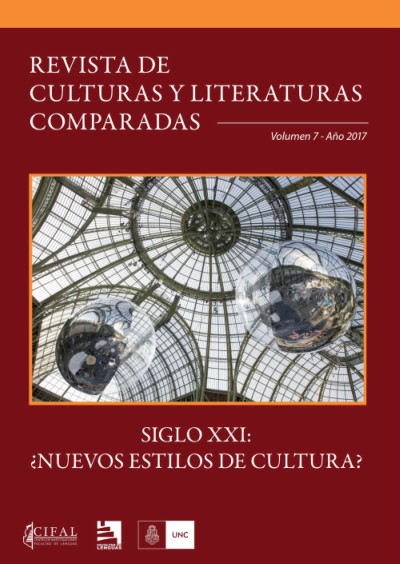When the Novel Looks like a Different Genre: The Scrapbook as Structuring Genre in The Scrapbook of Frankie Pratt
Keywords:
graphic exploitation in the novel, twenty-first century novels, Bakhtin, framing genres, scrapbookAbstract
There is an increasing number of novels that stylize discursive genres which are not historically associated with literary texts as the structure for the plot and which are crucial to make sense of the text in multiple ways, while exploiting their graphic potential ostensibly. More than just literary oddities, these narratives must be conceived as inscribed in a context that is witnessing the increasingly active role of experimental graphic exploitation in contemporary fiction in the 21st century, and which demands active and competent readers to approach them. Bakhtin's theory of the novel allows to shed light on them as it conceives the novel genre as a sociocultural discursive construct, a genre with memory which, by means of its resources, creates expectations and configures its readers according to cultural changes and other discursive genres. From this view, the novel is in constant transformation: a genre that feeds from social discourses to convey a world vision and to discuss the problems of its time. The present work proposes a bakhtinian reading of The Scrapbook of Frankie Pratt: a novel in pictures (2011), by American Caroline Preston, a novel that looks like—that is, appears as—a scrapbook.
Downloads
References
Arán, Pampa. “Géneros discursivos y géneros literarios”. La herencia de Bajtín. Reflexiones y migraciones. Ed. Pampa Arán. Córdoba: Centro de Estudios Avanzados, 2016. 119 – 134.
---. La estilística de la novela en M. M. Bajtin. Teoría y aplicación metodológica . Córdoba: Narvaja Editor, 1998.
Bajtín, Mijail. “Épica y novela. Acerca de la metodología del análisis novelístico”. 1965. Teoría y estética de la novela. Trad. H. Kriukova y V. Cazcarra. Madrid: Taurus, 1989. 449-486.
---. “La palabra en la novela.” 1934-1935. Teoría y estética de la novela. Trad. H. Kriukova y V. Cazcarra. Madrid: Taurus, 1989. 77-236.
---. “El Problema de los géneros discursivos”. Estética de la creación verbal. Trad. Tatiana Bubnova. Mexico: Siglo XXI Editores, 1998. 248-293.
---. “El problema del texto en la lingüística, la filología y otras ciencias humanas. Ensayo de análisis filosófico”. Estética de la creación verbal. Trad. Tatiana Bubnova. Mexico: Siglo XXI Editores, 1998. 294-323.
---. Problemas de la poética de Dostoievski. 1929-1963. Trad. Tatiana Bubnova. México: FCE, 1986.
Bateman, John. Multimodality and Genre: A Foundation for the Systematic Analysis of Multimodal Documents. Berlin: Springer, 2008.
Christinidis, Georgia. “Truth Claims in the Contemporary Novel: The Authenticity Effect, Allegory, and Totality”. Realisms in contemporary culture. Eds. Dorothee Birke y Stella Butter. Berlin: Walter de Gruyter, 2013. 33-48.
Greenwald Smith, Rachel. “Six Propositions on Compromise Aesthetics”. Postmodern/postwar and after: Rethinking American literature. Eds. Jason Gladstone, Andrew Hoberek, y Daniel Worden. Iowa: University of Iowa Press. 181-196.
MacCannell, Dean. “Staged authenticity today”. Indefensible Space: The Architecture of the National Insecurity State. Ed. Michael Sorkin. New York: Routledge, 2008. 259-276.
Mirzoeff, Nicholas. An Introduction to Visual Culture. Londres: Psychology Press, 1999.
Pressman, Jessica. “The Aesthetic of Bookishness in Twenty-First-Century Literature”. Michigan Quarterly Review, 48 (2009). 19 mayo 2017. Web.
Preston, Alex. “How Real Books Have Trumped Ebooks”. The Guardian, 14 de mayo. 2017. Web.
Preston, Caroline. “How my Love for Vintage Ephemera Inspired a Scrapbook Novel”. Carolinepreston.com. Web. 20 abril 2017.
---. The Scrapbook of Frankie Pratt: A novel. Nueva York: Harper Collins Publishers, 2011.
Tucker, Susan, et ál. The Scrapbook in American Life. Philadelphia, PA: Temple University Press, 2006.
Valles Calatrava, José R. Teoría de la narrativa: Una perspectiva sistemática. Madrid: Iberoamericana – Vervuert, 2008.
Volóshinov, Valentín. El marxismo y la filosofía del lenguaje. 1929. Trad. Tatiana Bubnova. Buenos Aires, Ediciones Godot, 2009.
Published
How to Cite
Issue
Section
License
Aquellos/as autores/as que tengan publicaciones con esta revista, aceptan los términos siguientes:
a) Los/as autores/as conservarán sus derechos de autor y garantizarán a la revista el derecho de primera publicación de su obra, el cual estará simultáneamente sujeto a la Licencia de reconocimiento de Creative Commons.
b) La cesión de derechos no exclusivos implica que la publicación de los artículos en la presente revista no quita la posibilidad o el derecho al autor/a de publicar su obra de manera posterior en otras revistas u órganos editoriales y la autorización por parte de los/as autores/as para que el trabajo sea depositado en los repositorios institucionales, tales como el Portal de Revistas de la Universidad Nacional de Córdoba.



